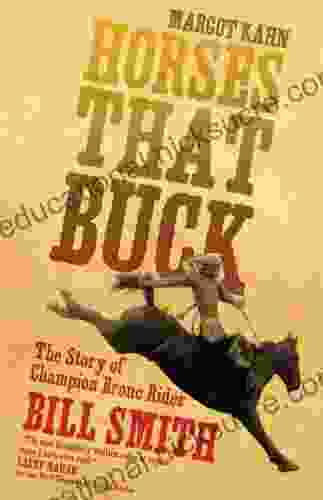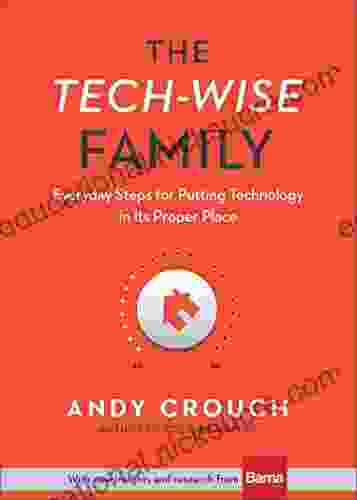Learning Agile: Understanding Scrum, XP, Lean, and Kanban

Agile is a set of methodologies and frameworks that emphasize iterative development, team collaboration, and continuous improvement. Agile approaches have gained popularity in software development and other industries due to their ability to increase team productivity, improve project outcomes, and adapt to changing requirements.
This article provides an overview of four popular Agile frameworks: Scrum, XP, Lean, and Kanban. We'll explore the principles, practices, and benefits of each approach to help you understand how they can benefit your team.
Scrum is an Agile framework that emphasizes iterative development and team collaboration. It is based on the idea of "sprints," which are short periods of time (typically two weeks) during which the team focuses on completing a specific set of deliverables.
4.5 out of 5
| Language | : | English |
| File size | : | 44630 KB |
| Text-to-Speech | : | Enabled |
| Screen Reader | : | Supported |
| Enhanced typesetting | : | Enabled |
| Word Wise | : | Enabled |
| Print length | : | 422 pages |
Principles of Scrum:
- Empiricism: Scrum is based on the idea of empiricism, which means that decisions are made based on evidence and experience rather than assumptions.
- Self-organization: Scrum teams are self-organizing, which means that they have the autonomy to decide how they will work and solve problems.
- Iterative development: Scrum projects are developed iteratively, with each sprint producing a working increment of the final product.
- Team collaboration: Scrum teams are highly collaborative, with members working together to achieve the team's goals.
Practices of Scrum:
- Sprints: Scrum projects are divided into sprints, which are typically two weeks long.
- Sprint planning: At the beginning of each sprint, the team plans the work that will be completed during the sprint.
- Daily stand-up meetings: Scrum teams hold daily stand-up meetings to discuss progress, identify roadblocks, and make adjustments.
- Sprint reviews: At the end of each sprint, the team reviews the work that was completed and gets feedback from stakeholders.
- Sprint retrospectives: At the end of each sprint, the team reflects on the sprint and identifies areas for improvement.
Benefits of Scrum:
- Increased productivity: Scrum can help teams to be more productive by providing a structured framework for planning, tracking, and completing work.
- Improved project outcomes: Scrum can help teams to deliver better project outcomes by emphasizing iterative development and continuous improvement.
- Increased team morale: Scrum can help to improve team morale by providing a collaborative and empowering work environment.
XP is an Agile framework that emphasizes customer satisfaction, team collaboration, and continuous improvement. It is based on the idea of "continuous feedback," which means that the team receives feedback from customers and stakeholders throughout the development process.
Principles of XP:
- Customer satisfaction: XP is focused on delivering value to customers, and customer satisfaction is the ultimate measure of success.
- Team collaboration: XP teams are highly collaborative, with members working together to achieve the team's goals.
- Continuous improvement: XP teams are constantly striving to improve their processes and practices.
- Feedback: XP teams receive feedback from customers and stakeholders throughout the development process.
Practices of XP:
- Pair programming: XP teams often use pair programming, where two developers work together on the same code.
- Test-driven development: XP teams use test-driven development, where they write tests before writing code.
- Continuous integration: XP teams integrate their code changes into the main branch frequently.
- Refactoring: XP teams refactor their code regularly to improve its quality.
- User stories: XP teams use user stories to describe the features that they are developing.
Benefits of XP:
- Increased customer satisfaction: XP can help teams to deliver products that meet customer needs and expectations.
- Improved project outcomes: XP can help teams to deliver better project outcomes by emphasizing continuous feedback and improvement.
- Increased team morale: XP can help to improve team morale by providing a collaborative and empowering work environment.
Lean is a set of principles and practices that emphasize waste reduction and continuous improvement. It is based on the idea of the "Toyota Production System," which was developed by Toyota to improve the efficiency of its manufacturing processes.
Principles of Lean:
- Value: Lean focuses on delivering value to customers, and waste is anything that does not add value.
- Flow: Lean emphasizes the importance of creating a smooth flow of work, without any bottlenecks.
- Pull: Lean uses a pull system, where work is only done when it is needed by the customer.
- Perfection: Lean is based on the idea of continuous improvement, and the goal is to always strive for perfection.
Practices of Lean:
- Value stream mapping: Lean teams use value stream mapping to identify and eliminate waste.
- Kanban: Lean teams often use Kanban to visualize their work and manage their workflow.
- Just-in-time production: Lean teams produce products only when they are needed by the customer.
- Continuous improvement: Lean teams are constantly striving to improve their processes and practices.
Benefits of Lean:
- Increased productivity: Lean can help teams to be more productive by reducing waste and improving flow.
- Improved project outcomes: Lean can help teams to deliver better project outcomes by emphasizing value and continuous improvement.
- Increased team morale: Lean can help to improve team morale by providing a collaborative and empowering work environment.
Kanban is a visual management system that helps teams to visualize their work and manage their workflow. It is based on the idea of "just-in-time production," where work is only done when it is needed by the customer.
Principles of Kanban:
- Visualize work: Kanban teams use a visual board to visualize their work and manage their workflow.
- Limit work in progress: Kanban teams limit the amount of work that they are working on at any given time.
- Pull: Kanban teams use a pull system, where work is only done when it is needed by the customer.
- Continuous improvement: Kanban teams are constantly striving to improve their processes and practices.
Practices of Kanban:
- Kanban board: Kanban teams use a Kanban board to visualize their work. The board is divided into columns, which represent the different stages of the workflow.
- Kanban cards: Kanban teams use Kanban cards to represent their work items. The cards are moved through the columns on the board as the work progresses.
- Work-in-progress limits: Kanban teams limit the amount of work that they are working on at any given time. This helps to prevent bottlenecks and improve flow.
- Continuous improvement: Kanban teams are constantly striving to improve their processes and practices.
Benefits of Kanban:
- Increased productivity: Kanban can help teams to be more productive by visualizing their work and managing their workflow.
- Improved project outcomes: Kanban can help teams to deliver better project outcomes by emphasizing value and continuous improvement.
- Increased team morale: Kanban can help to improve team morale by providing a collaborative and empowering work environment.
Scrum, XP, Lean, and Kanban are four popular Agile methodologies and frameworks that can help teams to improve their productivity, project outcomes, and team morale. Each approach has its own unique strengths and weaknesses, so it is important to choose the approach that is best suited to your team's needs.
If you are interested in learning more about Agile methodologies and frameworks, there are many resources available online and through professional development courses. You can also find many Agile communities and meetups where you can connect with other Agile practitioners and learn from their experiences.
4.5 out of 5
| Language | : | English |
| File size | : | 44630 KB |
| Text-to-Speech | : | Enabled |
| Screen Reader | : | Supported |
| Enhanced typesetting | : | Enabled |
| Word Wise | : | Enabled |
| Print length | : | 422 pages |
Do you want to contribute by writing guest posts on this blog?
Please contact us and send us a resume of previous articles that you have written.
 Fiction
Fiction Non Fiction
Non Fiction Romance
Romance Mystery
Mystery Thriller
Thriller SciFi
SciFi Fantasy
Fantasy Horror
Horror Biography
Biography Selfhelp
Selfhelp Business
Business History
History Classics
Classics Poetry
Poetry Childrens
Childrens Young Adult
Young Adult Educational
Educational Cooking
Cooking Travel
Travel Lifestyle
Lifestyle Spirituality
Spirituality Health
Health Fitness
Fitness Technology
Technology Science
Science Arts
Arts Crafts
Crafts DIY
DIY Gardening
Gardening Petcare
Petcare Carolyn Savage
Carolyn Savage Betty Smith
Betty Smith Linda Whitenton
Linda Whitenton Anthony Bishop Lmft
Anthony Bishop Lmft M L Ray
M L Ray Guns Ammo
Guns Ammo Helen O Neil
Helen O Neil K L Walther
K L Walther Dan Anderson
Dan Anderson Andrew Hartman
Andrew Hartman Michele Amitrani
Michele Amitrani Sean B Carroll
Sean B Carroll Gabriel Weinberg
Gabriel Weinberg Erika V Shearin Karres
Erika V Shearin Karres Rob Eastaway
Rob Eastaway Jim Flynn
Jim Flynn Zhongxian Wu
Zhongxian Wu Sharae Moore
Sharae Moore James R Hansen
James R Hansen Carl Petersen
Carl Petersen Andy Ankowski
Andy Ankowski Leslie Klenke
Leslie Klenke Stephen Howe
Stephen Howe Robert M Schoch
Robert M Schoch Sue Fleming
Sue Fleming J D Lenzen
J D Lenzen Rachel E Spector
Rachel E Spector Rupert Sheldrake
Rupert Sheldrake Monty Roberts
Monty Roberts Martin Woodward
Martin Woodward Liz Prince
Liz Prince Tiffany Harelik
Tiffany Harelik Susana Wald
Susana Wald Elizabeth Walter
Elizabeth Walter Sadie Robertson
Sadie Robertson Texes Exam Secrets Test Prep Team
Texes Exam Secrets Test Prep Team Anne Marie Scully
Anne Marie Scully Justine Bold
Justine Bold Kevin Anderson
Kevin Anderson Linda Goldberg
Linda Goldberg Bill Dance
Bill Dance Slow Sprint
Slow Sprint Jerry M Gutlon
Jerry M Gutlon Andrew Nahum
Andrew Nahum Eva Longoria
Eva Longoria Sebastian Deterding
Sebastian Deterding Xavier P Hunter
Xavier P Hunter Sam Fels
Sam Fels Luca Brambilla
Luca Brambilla Diane R Gehart
Diane R Gehart Diane Tober
Diane Tober Dawne Archer
Dawne Archer Ron Hackett
Ron Hackett William Mark Huey
William Mark Huey Guy Windsor
Guy Windsor J K Rowling
J K Rowling Benedict Goleman
Benedict Goleman Xan Barksdale
Xan Barksdale Dan Werb
Dan Werb Stephon Alexander
Stephon Alexander Richelle Mead
Richelle Mead John Atherton
John Atherton Jay Arthur
Jay Arthur V S Ramachandran
V S Ramachandran Joseph Bronson
Joseph Bronson Ronald T Kneusel
Ronald T Kneusel Andrew Thompson
Andrew Thompson Erin Macpherson
Erin Macpherson Seth J Gillihan Phd
Seth J Gillihan Phd Cary Hanson
Cary Hanson Ilene And Gary Modica
Ilene And Gary Modica Mark Needham
Mark Needham Jennie Erin Smith
Jennie Erin Smith Damon Wiseley
Damon Wiseley Annette K Larsen
Annette K Larsen Slavka Bodic
Slavka Bodic Timothy Gordon
Timothy Gordon Antonio Pigafetta
Antonio Pigafetta Lucy Atkins
Lucy Atkins Gary Todd
Gary Todd Dustin Howe
Dustin Howe Andrew M Greeley
Andrew M Greeley Tim Clarkson
Tim Clarkson William E Hearn
William E Hearn Richard Twiss
Richard Twiss Bryan Mellonie
Bryan Mellonie Prosanta Chakrabarty
Prosanta Chakrabarty Jordan Ellenberg
Jordan Ellenberg Aristeidis Bampakos
Aristeidis Bampakos Stan Tekiela
Stan Tekiela Behrouz Moemeni
Behrouz Moemeni Mona Liza Santos
Mona Liza Santos Morten Lund
Morten Lund Mark Vella
Mark Vella Sam Maggs
Sam Maggs Rosita Boland
Rosita Boland S G Taylor
S G Taylor John Lofty Wiseman
John Lofty Wiseman Chris Mcmullen
Chris Mcmullen Sara T Gibbs
Sara T Gibbs Andrius Jac
Andrius Jac Vanessa A P
Vanessa A P Maggie Stiefvater
Maggie Stiefvater Carson Mccullers
Carson Mccullers Palle Yourgrau
Palle Yourgrau Laird Hamilton
Laird Hamilton William Ma
William Ma Julie Lythcott Haims
Julie Lythcott Haims Bryan Sykes
Bryan Sykes Melisenda Edwards
Melisenda Edwards Nick Estes
Nick Estes Carolyn S Schroeder
Carolyn S Schroeder Chris Dowhan
Chris Dowhan Rick Scoppe
Rick Scoppe Mike Cohn
Mike Cohn Rachel Lynn Solomon
Rachel Lynn Solomon Jakob Schwichtenberg
Jakob Schwichtenberg Hp Newquist
Hp Newquist Ricky Roberts Iii
Ricky Roberts Iii Fred Rogers
Fred Rogers Steve Lage
Steve Lage Neil Harman
Neil Harman Rhianna Pratchett
Rhianna Pratchett Angela Berkfield
Angela Berkfield Sol Adoni
Sol Adoni Stephen James
Stephen James Geraldine Woods
Geraldine Woods Lisa Cron
Lisa Cron Gladstone Califf
Gladstone Califf Daniel Mark Brown
Daniel Mark Brown Gordon Webster
Gordon Webster Kuldeep Singh
Kuldeep Singh Lauren James
Lauren James Sheryl Feinstein
Sheryl Feinstein Kathleen Huggins
Kathleen Huggins Larry Jacobson
Larry Jacobson Marissa Meyer
Marissa Meyer Paul Davies
Paul Davies Dennis J Stanford
Dennis J Stanford N S Wikarski
N S Wikarski Reid Sheftall M D
Reid Sheftall M D Helene Henderson
Helene Henderson Rachel Pepper
Rachel Pepper Gordon Churchill
Gordon Churchill Kirk W Johnson
Kirk W Johnson Sendhil Mullainathan
Sendhil Mullainathan Melody Groves
Melody Groves Shannon Jensen
Shannon Jensen Janis Abrahms Spring
Janis Abrahms Spring Rolf Potts
Rolf Potts Michelle Madow
Michelle Madow Lisa Bevere
Lisa Bevere L Kathleen Mahan
L Kathleen Mahan Laurie David
Laurie David John R Anderson
John R Anderson Charlie Jones
Charlie Jones Andrew H Knoll
Andrew H Knoll Fourth Edition Kindle Edition
Fourth Edition Kindle Edition Nina Varela
Nina Varela Christian Heath
Christian Heath Wendy Bryden
Wendy Bryden Emily Wibberley
Emily Wibberley H A Lorentz
H A Lorentz Ruth E Van Reken
Ruth E Van Reken Christine Pearson Casanave
Christine Pearson Casanave Michael Epperson
Michael Epperson Bob Brier
Bob Brier Kinley Macgregor
Kinley Macgregor Tami Fox
Tami Fox Melanie Burnell
Melanie Burnell Mary H K Choi
Mary H K Choi Carl Allchin
Carl Allchin Judith A Cohen
Judith A Cohen Andrew Hempstead
Andrew Hempstead Philip Reeve
Philip Reeve Donn F Draeger
Donn F Draeger Jennifer Lw Fink Rn Bsn
Jennifer Lw Fink Rn Bsn Suzanne Van Atten
Suzanne Van Atten Brian L Silver
Brian L Silver Mikael Krief
Mikael Krief Elijah N Daniel
Elijah N Daniel John Eberhart
John Eberhart Yasuharu Okuda
Yasuharu Okuda Andy Burnham
Andy Burnham Andrew Shaw
Andrew Shaw Edmund Nequatewa
Edmund Nequatewa James D Watson
James D Watson Connie Goldsmith
Connie Goldsmith John Macgregor
John Macgregor Adam Minter
Adam Minter Andrew J Wakefield
Andrew J Wakefield Ernest Becker
Ernest Becker Dan Orr
Dan Orr Stephen Rea
Stephen Rea Andrew Robinson
Andrew Robinson Dr John Hockey
Dr John Hockey Marie Sherlock
Marie Sherlock Mark Cannizzaro
Mark Cannizzaro Joy Vines
Joy Vines Nicholas D Souza
Nicholas D Souza Robert Parris Moses
Robert Parris Moses Robert Kurson
Robert Kurson Aaron Edkins
Aaron Edkins Natalie Babbitt
Natalie Babbitt Luna Fox
Luna Fox Fiona Higgins
Fiona Higgins Michaela Deprince
Michaela Deprince Julia Cameron
Julia Cameron Jack David Eller
Jack David Eller Paul Seabright
Paul Seabright Jason William
Jason William Lisa Roberts
Lisa Roberts Tom Rosenbauer
Tom Rosenbauer Walter Martin
Walter Martin Ira J Chasnoff
Ira J Chasnoff Mawi Asgedom
Mawi Asgedom Nick Jaffe
Nick Jaffe Marcos Romero
Marcos Romero Kevin Shea
Kevin Shea The Car Crash Detective
The Car Crash Detective Nancy Wainer Cohen
Nancy Wainer Cohen Hope Jahren
Hope Jahren Samara Caughey
Samara Caughey Shannon Van Den Berg
Shannon Van Den Berg Jennie Lynn Gillham
Jennie Lynn Gillham Kevin Thomas
Kevin Thomas Jonathan Bennett
Jonathan Bennett Jaimal Yogis
Jaimal Yogis Andrew Warnes
Andrew Warnes M J Abadie
M J Abadie Jonathan C Slaght
Jonathan C Slaght Bruce H Lipton
Bruce H Lipton Ruth Bell Graham
Ruth Bell Graham Becky Albertalli
Becky Albertalli George Washington Cable
George Washington Cable Andrew X Pham
Andrew X Pham Richard Bullivant
Richard Bullivant Des Hewitt
Des Hewitt Rhonda V Magee
Rhonda V Magee Dan Allan
Dan Allan Ehsan Masood
Ehsan Masood Jeffro Johnson
Jeffro Johnson Christopher Vaughan
Christopher Vaughan C Todd Lombardo
C Todd Lombardo Jenny Randles
Jenny Randles Nicholas Harvey
Nicholas Harvey Jay Sokolovsky
Jay Sokolovsky Gordon Wright
Gordon Wright Lauren Conrad
Lauren Conrad Caroline Finnerty
Caroline Finnerty Brianne Donaldson
Brianne Donaldson Peter Kaminsky
Peter Kaminsky Vincent Norman
Vincent Norman Nicholas J Higham
Nicholas J Higham Uma Dinsmore Tuli
Uma Dinsmore Tuli Simson L Garfinkel
Simson L Garfinkel Shannon Brown
Shannon Brown Madeleine Roux
Madeleine Roux Bronwen Skye
Bronwen Skye John Mcphee
John Mcphee Patrick Barrett
Patrick Barrett Madeleine L Engle
Madeleine L Engle Frances A Yates
Frances A Yates Alexander Bennett
Alexander Bennett Claire Ahn
Claire Ahn Pawel Guziejko
Pawel Guziejko Peggy Orenstein
Peggy Orenstein Erwin Schrodinger
Erwin Schrodinger Justine Bateman
Justine Bateman Andrew Heywood
Andrew Heywood Seabury Quinn
Seabury Quinn Sarah Pinborough
Sarah Pinborough Catherine Gildiner
Catherine Gildiner Sharon A Hansen
Sharon A Hansen Henry Fielding
Henry Fielding Damon B Akins
Damon B Akins Andrew Peterson
Andrew Peterson Robert Holdstock
Robert Holdstock Lynn Painter
Lynn Painter Shonda Rhimes
Shonda Rhimes Gordon W Green
Gordon W Green Chaim Potok
Chaim Potok Dr Sarah Mitchell
Dr Sarah Mitchell Sadhguru
Sadhguru Jamie Christian Desplaces
Jamie Christian Desplaces Andrew Reeves
Andrew Reeves Laird Scranton
Laird Scranton Bridgit Danner Lac
Bridgit Danner Lac Antipodean Writer
Antipodean Writer Michael Polanyi
Michael Polanyi Winifred Gallagher
Winifred Gallagher Cassandra Erkens
Cassandra Erkens Tom Doak
Tom Doak Miles Smeeton
Miles Smeeton Claire Phillips
Claire Phillips Gene Stone
Gene Stone Thomas F Hornbein
Thomas F Hornbein Michael F Roizen
Michael F Roizen Edgar H Schein
Edgar H Schein Emilie Bailey
Emilie Bailey Tom Chesshyre
Tom Chesshyre Atul K Mehra
Atul K Mehra Eddy Starr Ancinas
Eddy Starr Ancinas Teresa M Twomey
Teresa M Twomey Mallory Striesfeld Ms Lpc
Mallory Striesfeld Ms Lpc Jen Benson
Jen Benson Christine Carter
Christine Carter Portia Macintosh
Portia Macintosh Mark Lester
Mark Lester Tony Ray
Tony Ray Leigh Bernacchi
Leigh Bernacchi Nigel Calder
Nigel Calder Daniel Tammet
Daniel Tammet Mark Mcclusky
Mark Mcclusky Jared Benson
Jared Benson Jim Hardy
Jim Hardy Master Wong
Master Wong Kris Holloway
Kris Holloway Andrew Jamieson
Andrew Jamieson David Carrasco
David Carrasco Jessie Cal
Jessie Cal Rami Ungar
Rami Ungar Mirabai Starr
Mirabai Starr Jonathan Scott
Jonathan Scott Helene St James
Helene St James George W Hart
George W Hart Michael J Thompson
Michael J Thompson Nelson L Schuman
Nelson L Schuman Andrew Hudson
Andrew Hudson Teresa Palmer
Teresa Palmer Andrew Moore
Andrew Moore J P Mcevoy
J P Mcevoy Dave Chambers
Dave Chambers Lawrence Dawson
Lawrence Dawson Ruta Sepetys
Ruta Sepetys Touko Amekawa
Touko Amekawa Davida Hartman
Davida Hartman Cathy Kelly
Cathy Kelly Gina M Biegel
Gina M Biegel Garth Nix
Garth Nix George H Odell
George H Odell Elizabeth Acevedo
Elizabeth Acevedo Howling Moon Books
Howling Moon Books Kent Nerburn
Kent Nerburn John Daido Loori
John Daido Loori Mike Wells
Mike Wells Jessica Speer
Jessica Speer Tina H Boogren
Tina H Boogren Monica Clyde
Monica Clyde J Richard Hackman
J Richard Hackman David Sowell
David Sowell Vibrant Publishers
Vibrant Publishers Marsha Walker
Marsha Walker Clinton Anderson
Clinton Anderson Andrew Lang
Andrew Lang Stephen Prata
Stephen Prata Sally Bjornsen
Sally Bjornsen Glenn Berkenkamp
Glenn Berkenkamp Delphi Classics
Delphi Classics W Somerset Maugham
W Somerset Maugham Sarah Digregorio
Sarah Digregorio Vivien Newman
Vivien Newman Sally Cook
Sally Cook Carla Killough Mcclafferty
Carla Killough Mcclafferty P Anastasia
P Anastasia Andrew Lawler
Andrew Lawler Jennifer M Rosner
Jennifer M Rosner Emily Kerr
Emily Kerr David Hawkins
David Hawkins Jon Paschetto
Jon Paschetto Christine Moore
Christine Moore Tom Bertrand
Tom Bertrand T H Lain
T H Lain Howard Thurman
Howard Thurman Sian Beilock
Sian Beilock Daniel W Cunningham
Daniel W Cunningham Quick Guide
Quick Guide K A Linde
K A Linde Robert N Wiedenmann
Robert N Wiedenmann Stanley L Jaki
Stanley L Jaki David Jefferson
David Jefferson William J Broad
William J Broad John H Carroll
John H Carroll Carla Hannaford
Carla Hannaford Molly E Lee
Molly E Lee Stephanie V W Lucianovic
Stephanie V W Lucianovic Andrew Stellman
Andrew Stellman Ben Foss
Ben Foss Bruno David
Bruno David Edward C Klatt
Edward C Klatt Jerusha Clark
Jerusha Clark Andrew Zerling
Andrew Zerling Rosalind Miles
Rosalind Miles Loris Chen
Loris Chen Bill Pennington
Bill Pennington Kirk Goldsberry
Kirk Goldsberry Michael Barela
Michael Barela Mary Sheedy Kurcinka
Mary Sheedy Kurcinka Rainer Martens
Rainer Martens Jim Burnett
Jim Burnett Michael J Mauboussin
Michael J Mauboussin Rory Stewart
Rory Stewart W Michael Kelley
W Michael Kelley Timothy Ferris
Timothy Ferris Tim Huffman
Tim Huffman William Gurstelle
William Gurstelle Ruth Haley Barton
Ruth Haley Barton Andy Crouch
Andy Crouch James P Sethna
James P Sethna Jerry Z Muller
Jerry Z Muller Daniel D Fox
Daniel D Fox Gila Leiter
Gila Leiter Claiborne Young
Claiborne Young Roger Highfield
Roger Highfield Kay Pranis
Kay Pranis Chris Rodell
Chris Rodell Shari Mezrah
Shari Mezrah Christopher Hodapp
Christopher Hodapp Jamie Thornton
Jamie Thornton Clare Keyes
Clare Keyes John Helyar
John Helyar Richard G Klein
Richard G Klein Akil Palanisamy
Akil Palanisamy Rosicrucian Order Amorc
Rosicrucian Order Amorc Stacey Lee
Stacey Lee Zita Grant
Zita Grant Educational Brain Games
Educational Brain Games Carolyn Coker Ross
Carolyn Coker Ross Ed Rosenthal
Ed Rosenthal Ashley Schmitt
Ashley Schmitt David Stipp
David Stipp Nancy Frey
Nancy Frey Justin Fox Burks
Justin Fox Burks Peter Compton
Peter Compton Piero Ferrucci
Piero Ferrucci Tanya Crossman
Tanya Crossman Mark Vanhoenacker
Mark Vanhoenacker Thomas Clarkson
Thomas Clarkson Sarah Castille
Sarah Castille Charles Darwin
Charles Darwin Hugh P Mckenna
Hugh P Mckenna Heidi Dais
Heidi Dais Ross Bernstein
Ross Bernstein Sean Bloomfield
Sean Bloomfield Nadia Shammas
Nadia Shammas Samuel Hideo Yamashita
Samuel Hideo Yamashita Eli Maor
Eli Maor Brock Lesnar
Brock Lesnar Rita Jablonski
Rita Jablonski Maggie Ryan
Maggie Ryan Tom Holland
Tom Holland Michio Kaku
Michio Kaku Elianor M A
Elianor M A Stephen Cole
Stephen Cole Jon Gertner
Jon Gertner Briana Wiles
Briana Wiles Judy Ford
Judy Ford Peter D Jeans
Peter D Jeans Christopher Dunn
Christopher Dunn Rolf Dobelli
Rolf Dobelli Mark Hyman
Mark Hyman Jason R Rich
Jason R Rich Kathrine Switzer
Kathrine Switzer Dawn Isaac
Dawn Isaac Carl Hart
Carl Hart David A French
David A French John Sefton
John Sefton Sabrina Chevannes
Sabrina Chevannes Omar D Lewis Sr
Omar D Lewis Sr Beverly Asante Puschmann
Beverly Asante Puschmann Eric H Cline
Eric H Cline Marianne Ryan
Marianne Ryan Andrew Phillip Smith
Andrew Phillip Smith E K Johnston
E K Johnston Marian Stamp Dawkins
Marian Stamp Dawkins Harvey Motulsky
Harvey Motulsky Chaz Scoggins
Chaz Scoggins Joey Rive
Joey Rive Lisa Silverman
Lisa Silverman Patrick Felicia
Patrick Felicia Pseudo Nym
Pseudo Nym Kari Kampakis
Kari Kampakis Jill Squyres Groubert Phd
Jill Squyres Groubert Phd Debbie Felkins Tamez
Debbie Felkins Tamez Charles Cooper
Charles Cooper Brian Grossenbacher
Brian Grossenbacher Andrew Hodges
Andrew Hodges James Berry
James Berry Dora Kurimay
Dora Kurimay Stephan Lee
Stephan Lee Christopher O Shaughnessy
Christopher O Shaughnessy Ginger Scott
Ginger Scott Fatime Losonci
Fatime Losonci Marcus Tomlinson
Marcus Tomlinson Sarah Edmondson
Sarah Edmondson Donna Tartt
Donna Tartt Arthur Kleinman
Arthur Kleinman Chelsea Johnson
Chelsea Johnson Joya Goffney
Joya Goffney Margot Kahn
Margot Kahn Lauren Kate
Lauren Kate Rudy Rucker
Rudy Rucker
Light bulbAdvertise smarter! Our strategic ad space ensures maximum exposure. Reserve your spot today!

 Junichiro TanizakiWord Power Made Easy: The Ultimate Guide to Building a Powerful Vocabulary
Junichiro TanizakiWord Power Made Easy: The Ultimate Guide to Building a Powerful Vocabulary
 Gene SimmonsEfficiently Define, Launch, and Manage Infrastructure as Code Across Various...
Gene SimmonsEfficiently Define, Launch, and Manage Infrastructure as Code Across Various... Jesus MitchellFollow ·8.6k
Jesus MitchellFollow ·8.6k Ben HayesFollow ·17k
Ben HayesFollow ·17k Anton FosterFollow ·15.3k
Anton FosterFollow ·15.3k Oscar BellFollow ·7.9k
Oscar BellFollow ·7.9k Brett SimmonsFollow ·15.8k
Brett SimmonsFollow ·15.8k Frank MitchellFollow ·8.5k
Frank MitchellFollow ·8.5k Philip BellFollow ·3.5k
Philip BellFollow ·3.5k Colton CarterFollow ·6.7k
Colton CarterFollow ·6.7k

 Craig Blair
Craig BlairThe Story of Champion Bronc Rider Bill Smith: A Legacy of...
In the annals of rodeo...

 H.G. Wells
H.G. WellsAmazing Real Life Stories In The News
The news is often...

 Jordan Blair
Jordan Blair35 Wellness Walks to Expand Awareness, Increase Vitality,...
In an era where technology...

 Edward Reed
Edward ReedCycling London to Paris: An Epic Adventure in the Making
Are you ready for the...

 Edgar Hayes
Edgar HayesEveryday Steps For Putting Technology In Its Proper Place
Are you constantly...

 Mitch Foster
Mitch FosterSat Math Mastery Advanced Algebra Geometry And Statistics
SAT Math Mastery Advanced Algebra Geometry...
4.5 out of 5
| Language | : | English |
| File size | : | 44630 KB |
| Text-to-Speech | : | Enabled |
| Screen Reader | : | Supported |
| Enhanced typesetting | : | Enabled |
| Word Wise | : | Enabled |
| Print length | : | 422 pages |








